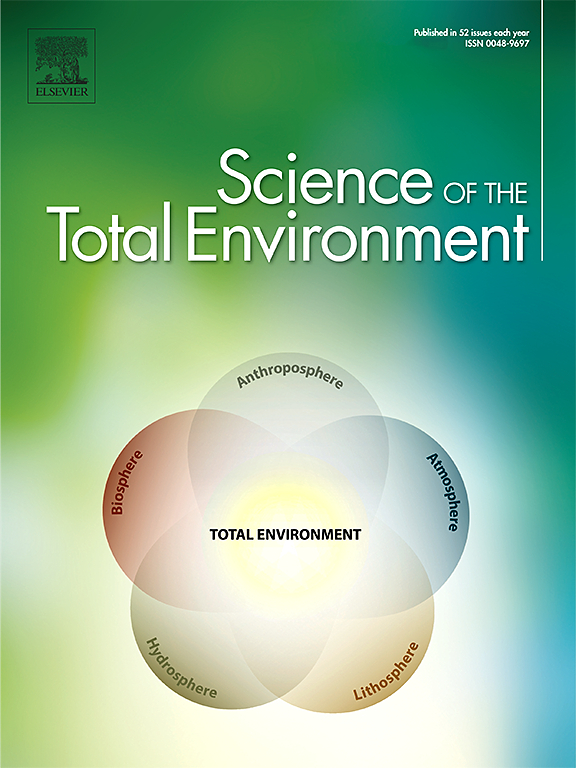Long term biodegradation study on tire and road wear particles and chemicals thereof
IF 8.2
1区 环境科学与生态学
Q1 ENVIRONMENTAL SCIENCES
引用次数: 0
Abstract
Tire and road wear particles (TRWP) are continuously formed by automotive traffic on roads. This study reports effects of long-term degradation over 2 years in water and in soil in the presence of microbes on TRWP and on cryo-milled tire tread (CMTT). Degradation in water had little measurable effect on physical properties of TRWP; a shift towards larger particle sizes was mainly due to the mechanical stress from stirring. The total quantified extractables (TQE) of 27 chemicals and transformation products determined from tire particles were reduced by 90 % from TRWP and CMTT in water and by 85 % in soil. Most of this decrease occurs within the first months. For both materials, however, the speed of loss of TQE in water and in soil decreased drastically over time. Its kinetics was approximated by two phases of 1st order kinetics, resulting in half-lives from 17 days for diphenylguanidine (DPG) in phase 1 to 520 days for 6-PPD-quinone (6-PPDQ) in phase 2 of TRWP biodegradation in water. For soil, half-lives tend to be clearly longer in phase 2 compared to water but remained <1000 days for chemicals such as benzothiazole sulfonic acid (BTSA), N,N′-diphenyl-p-phenylendiamine (DPPD) and hydroxybenzothiazole (OH-BT). For N-(1,3-dimethylbutyl)-N′-phenyl-1,4-phenylenediamine (6-PPD) and 6-PPDQ they exceeded 2000 days from TRWP. Only 1–15 % of TQE lost from the tire materials remained detectable at the end of the experimental period in the supernatant of the suspension or in leachates of the soil. Mostly benzothiazoles were determined from solution. The biodegradation experiments show an effective reduction of a large part of the chemical burden of TRWP of polar and moderately polar compounds. Despite that, TRWP may serve as a long-term reservoir for some of the tire related chemicals or their transformation products in the environment.

求助全文
约1分钟内获得全文
求助全文
来源期刊

Science of the Total Environment
环境科学-环境科学
CiteScore
17.60
自引率
10.20%
发文量
8726
审稿时长
2.4 months
期刊介绍:
The Science of the Total Environment is an international journal dedicated to scientific research on the environment and its interaction with humanity. It covers a wide range of disciplines and seeks to publish innovative, hypothesis-driven, and impactful research that explores the entire environment, including the atmosphere, lithosphere, hydrosphere, biosphere, and anthroposphere.
The journal's updated Aims & Scope emphasizes the importance of interdisciplinary environmental research with broad impact. Priority is given to studies that advance fundamental understanding and explore the interconnectedness of multiple environmental spheres. Field studies are preferred, while laboratory experiments must demonstrate significant methodological advancements or mechanistic insights with direct relevance to the environment.
 求助内容:
求助内容: 应助结果提醒方式:
应助结果提醒方式:


